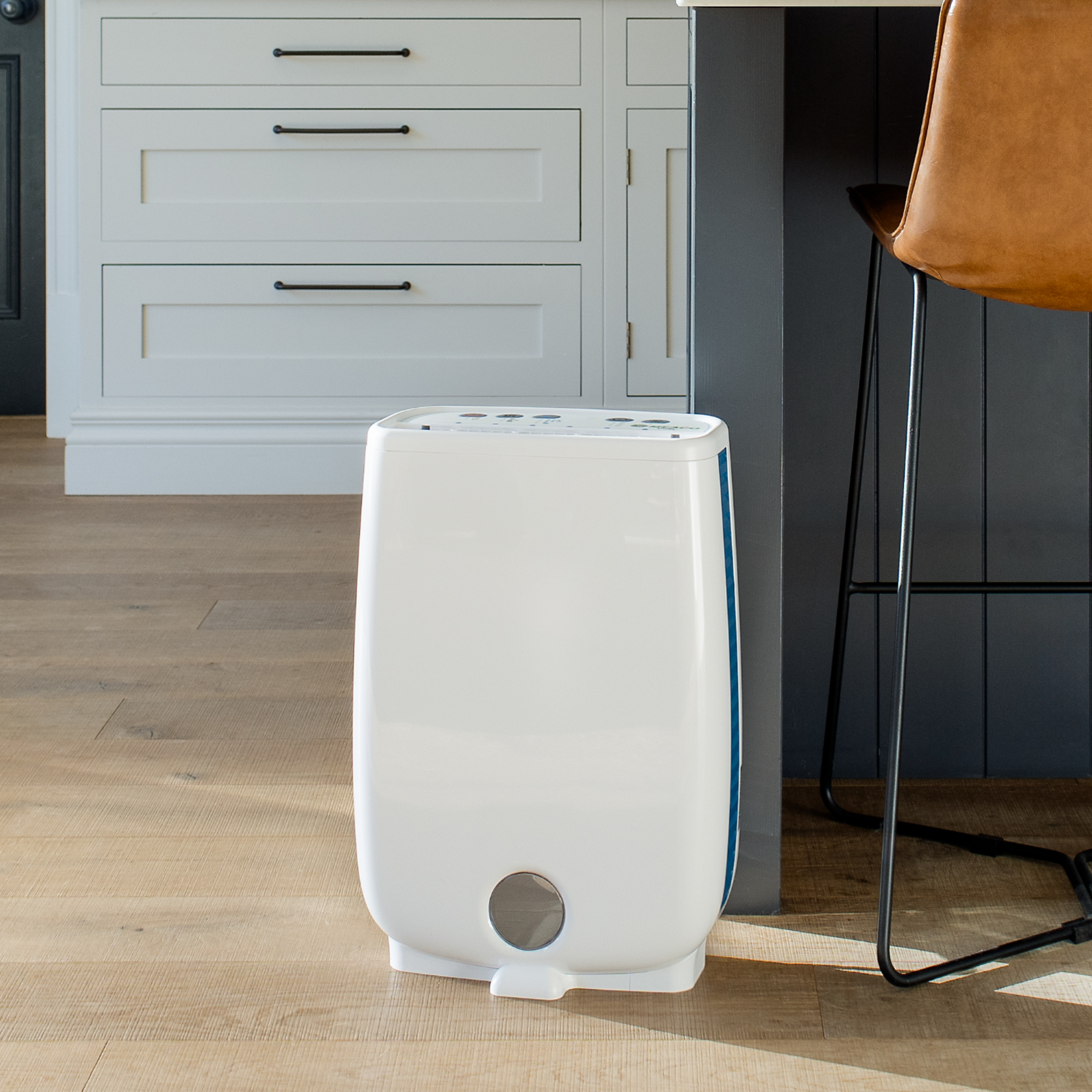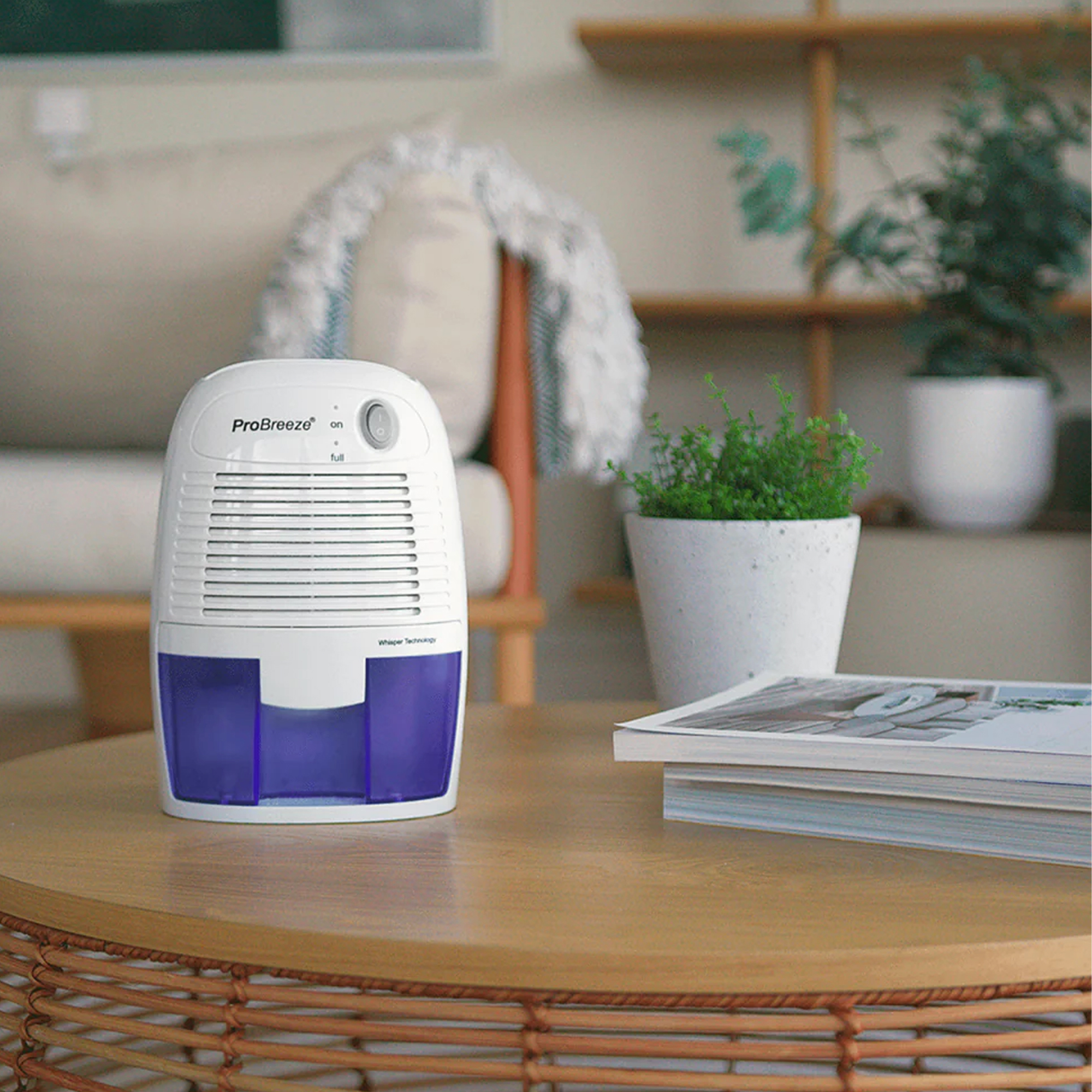5 places to never put a dehumidifier – experts urge you to avoid these spots or risk making your damp problems worse
Steer clear of these no-go spots when using your dehumidifier this winter


Now that we've fully made the transition into the autumn and winter months, dehumidifiers are once again cropping up as a seasonal must-have because of their ability to keep our homes dry and free of damp issues. However, did you know that where you put your dehumidifier can actually drastically impact how well it works? As such, knowing the worst places to put a dehumidifier, and avoiding them, certainly pays off.
Similar to many appliances, placement matters. Even if you do all the research to ensure you buy the best dehumidifier on the market, many of your efforts will be wasted if you put it in the wrong spot, leaving you with subpar results and unwanted moisture problems.
So, to ensure you avoid falling foul of a grave dehumidifier mistake, we've asked experts for their advice on where to avoid putting a dehumidifier, to ensure it continues to run its best and serve its role as a key helper in getting rid of damp, for years to come.
1. Near windows or doors

While it's been a topic of discussion for some time now, we've recently debunked whether or not you should keep windows closed when using a dehumidifier. The answer? Yes, they should be closed. Not only that, but you should avoid putting your dehumidifier too close to windows and doors regardless, as drafts or poorly insulated windows can affect the appliance's performance and add unnecessary airflow to a room.
'By keeping the door closed and placing the dehumidifier as close to the problem area as possible, you will ensure the most efficient solution,' says Laurie Crookes, buyer at Homebase.
2. Flush against walls or furniture

Just like other appliances, like what we know from the worst places to put an air conditioner, dehumidifiers also generally shouldn't be placed flush against a wall or any other furniture.
'This restricts airflow, preventing proper moisture extraction,' says Chris Michael, managing director at Meaco. 'However, some advanced dehumidifier models, like the Meaco Arete range, are exceptions to this.'
Sign up to our newsletter for style inspiration, real homes, project and garden advice and shopping know-how
The Meaco Arete Two, for example, has been cleverly designed to sit flush against a wall because the air intake at the back of the unit is set back slightly, still allowing for adequate airflow whilst opening up more possibilities for discreet placement of the dehumidifier.
But, as Chris notes, not all dehumidifiers harbour this ability, so it's important to check your manufacturer's guide. In any other cases, Laurie recommends positioning your dehumidifier 20-30cm away from any walls, to prevent the risk of overheating.
3. In enclosed spaces

The reasons you should avoid putting a dehumidifier in enclosed spaces is similar to that of placing the unit flush against walls or furniture: it restricts airflow.
'Without adequate air circulation, the dehumidifier won't perform optimally. It is strongly recommended to not use a compressor dehumidifier in a space smaller than 4 square metres,' says Chris. This goes for other kinds of electric dehumidifiers, including desiccant dehumidifiers.
4. In a corner
Although it might be tempting to tuck away your dehumidifier into a corner to keep it out of sight, you won't be doing yourself any favours in performance by doing so. Not only does placing it in a corner restrict airflow (as per the theme we've been saying with the last points), but it's also just a bad spot in general if you're trying to combat bigger moisture issues.
'Most people tend to put them in a corner, when instead you should be positioning the dehumidifier in the centre of the room to remove moisture. This ensures that there is enough space around the dehumidifier for the air to circulate,' says Joshua Warren, AO.com's dehumidifier expert.
5. In the bathroom

Bathrooms are notorious for the moisture issues they hold, but unfortunately, you can't and shouldn't use a dehumidifier in a bathroom – at least not the typical sort of electric dehumidifiers that initially come to mind anyway.
'Dehumidifiers are typically not IP rated, making them unsafe for use in wet environments,' says Chris. However, some exceptions would be opting for non-electric moisture absorbers, such as the stylish, little Absodry dehumidifier which can help manage damp with moisture-absorbing crystals. Yes, they're not your typical dehumidifier, but any way to reduce damp is better than none.
Instead of putting a dehumidifier directly inside a bathroom, Chris recommends placing the dehumidifier in a hallway or landing, enabling it to remove damp and prevent condensation in both bathrooms and bedrooms alike. In this specific circumstance, you should leave doors open to let the appliance do its thing.
Shop our top-rated dehumidifiers

The MeacoDry Arete Two is quiet, easy to use, works superbly and is very energy-efficient compared to other compressor dehumidifiers. It's an impressive step-up from its predecessor, now complete with a timer, Wi-Fi connectivity and Smart capabilities. Better yet, its Smart Laundry Mode is brilliant at drying wet washing.

Small, affordable, super quiet, and with low running costs of just 1p per hour, this is a budget-friendly option for minor moisture problems. Its Peltier condenser has a much lower extraction rate than most compressor dehumidifiers, but its compact build means it can be tucked easily away on a shelf, bedside table, or window sill.

If you're after a clever solution for managing moisture problems inside a bathroom, for example, the Absodry Duo Family dehumidifier is one that we've previously raved about for its stylish design and ease of use. Requiring no plugs or electricity, it's a a bathroom must.
All in all, placing a dehumidifier in the right spot can make all the difference in how comfortable your home feels. Knowing how to use a dehumidifier in the winter months and sticking to the recommended spots in your home for the best results will ensure your appliance continues to function efficiently, helping you to combat those pesky damp feels.
With a little bit of care and research, avoiding the worst places to put a dehumidifier won't be such a difficult task, but will slowly become second nature.

Jullia was Ideal Home’s Junior Writer from 2022-2024 and the Ideal Home Certified Expert in Training on Vacuums having spent over 60 hours testing different models. She’s always loved all things homes and interiors, graduating with a bachelor’s degree in Architectural Studies from the University of Nottingham where her love for writing blossomed following her internship at ArchDaily. Now focused on home tech and cleaning, Jullia works on writing features and explainers to help people make the most of their home appliance investments, putting the newest launches through their paces. When she isn’t writing, she loves exploring the city, coffee shop hopping, and losing hours to a cosy game or book.